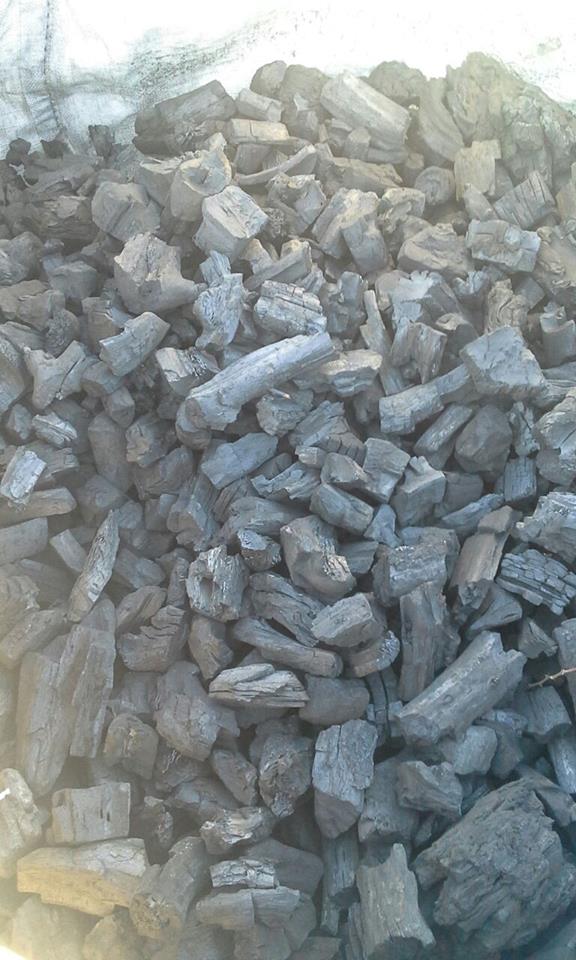Hardwood Charcoal
Hardwood charcoal:
• Made from only natural hardwood, such as maple, oak, mesquite or even hickory.
Whenever Fine Cooking runs a story on outdoor grilling, it seems that our expert authors always recommend cooking over natural hardwood charcoal (sometimes called charwood) instead of the more easily found charcoal briquettes.
Description
Description of Hardwood Charcoal:
Hardwood Charcoal a lightweight black carbon residue produced by removing water and other volatile constituents from animal and plant materials. https://en.wikipedia.org/wiki/Charcoal
Whenever fine cooking runs a story on outdoor grilling, it seems that our expert authors always recommend cooking over natural hardwood charcoal (sometimes called charwood) instead of the more easily found charcoal briquettes. Is this just barbecue snobbery? Hardly. There are some very real differences between hardwood charcoal and briquettes that do have an effect on grilling.
Hardwood Charcoal Specifications:
Length: 3cm / 28 cm
Diameter / Thickness: 3 cm to 10 cm
Shape: Irregular Shape, light easily, long time burning
Fixed Carbon: 75%
Moisture Level: 7%
Heating Level: Kcal /kg 6800
Volatile Matter: 13.5%
Burning Time: 980 sec/cm3
Wood Type: Big Trees (Casuarinas)
Using: Restaurant for BBQ, cooking, heating, energy, outdoor grilling.
Hardwood charcoal:
• Made from only natural hardwood, such as maple, oak, mesquite or even hickory.
• Once the wood is reduced to charcoal, it’s left in its original rough shape. In fact, the best way to determine the quality of the hardwood charcoal is to look at it—if you can recognize the shapes of real wood, you’ve got the real thing.
• Lights more quickly.
• Burns hotter (around 1,000°F), so you should make a smaller or more spread-out fire than you would with briquettes.
• Creates less ash.
• Imparts a purer, wood-fire flavor to foods.
• Any hardwood charcoal not completely burned during grilling may be put out and re-lit on another occasion for more grilling.
Charcoal Briquettes:
• Made from the sawdust of scrap wood (including resinous soft woods and composite woods).
• Combined with chemical binders and filler (including coal dust) and manually compressed into their characteristic pillow shapes.
• Slower to light, often requiring lighter fluid.
• Burns cooler (closer to 700° to 800°F).
• Burns more quickly, meaning a shorter window for grilling, or requiring that you add more during grilling.
• Smoke produced may be neutral at best and can contribute harsh and off-tasting flavors to grilled foods.
• Contributes more pollutants to the air as it burns.
Lump Hardwood Charcoal:
Lump charcoal also responds accordingly to oxygen, hence you can easily control the level of heat if your grill features adjustable air vents. It also contains no fillers or additives which makes it one of the cleanest ways to barbecue. Lump charcoal burns faster and hotter than briquettes so you do need to be careful with your temperature control. https://www.europepellets.com/product/kiln-dried-firewood/
What Is Extruded Lump Hardwood Charcoal:
Extruded charcoal is charcoal that is made by compressing sawdust into some shape via the process of extruding the sawdust through a die. The heat and pressure of the extrusion process serves to bind the sawdust into a log that can then be carbonized, i.e., made into charcoal. https://www.europepellets.com/product/wood-pellets-enplus-a1/
Two forms of raw material are known to us to be used in this process, sawdust collected from sawmills, and ground coconut shells. The raw material is dried and then compressed by a screw extruder or forming machine. The material is then extruded under a pressure of approximately 40 tons through a hot (300 to 350 degrees C) mold. The heat and pressure cause the lignin in the raw material to bind the material together into a solid log which is denser than the original material. https://www.europepellets.com/product/epal-euro-pallet/
Once the logs are formed, they can be carbonized in a kiln. The carbonized logs are then either cooled in the kiln or in a cooling chamber or box before being graded and packed. Once source on the web indicates the following grading system is used:
Grade “A” — void of cracks, hard with metallic sound when rolled and lengthy (not more than 4 pcs in a length of 390mm).
Grade “B” — with minimum cracks, hard and not less than 75mm in length.
Grade “C” — same as “B” except the length is not less than 50mm in length.
Here are some of the claims made by manufacturers of extruded charcoal:
Smokeless – the product burns without any smoke or fumes during the initial ignition and during the subsequent burning. https://www.europepellets.com/product/pine-wood-chips/
Low Ash Content – low residual ash, typically less than 5% of the original weight of the charcoal.
Higher fixed carbon – a high charring temperature ensures a high fixed carbon content.
Odorless – well charred charcoal will have minimum volatile substances within the charcoal, thus eliminating the possibility of odor. https://www.europepellets.com/product/alder-wood-pallet-elements/
Longer burning time – the charcoal burns longer compared to hardwood charcoal.
Higher calorific value – the minimum heating value of the charcoal should be 7,500KCal/Kg or better.
Low volatile content – the volatile content is low, allowing a burn without flame, smoke and fumes.
Chemical/binder free – the charcoal is produced with untreated (chemically) waste and void of binder.
Higher burning temperature – the charcoal is charred at high temperature so it will only burn at higher temperatures. https://www.europepellets.com/product/pini-kay-briquettes/
Sparkless – the charcoal does not produce sparks during burning. https://www.europepellets.com/contact-us/
Application & Uses of Briquettes:
Boilers (sugar mills, paper mills, chemical plants, Cement, food processing units, oil extraction units etc.) using fuel for steam generation and heating.
Hardwood charcoal are made from only natural hardwood, such as maple, oak, mesquite or even hickory. https://www.europepellets.com/product-category/wood-shavings/
But we recommend hardwood if you want to take your grilling seriously. The blazing hot coals give a deeper, quicker crust to burgers or steak, and the unadulterated composition means you’re not burning any junk in your grill. Plus, hardwood affords you grill master bragging rights.
Whenever Fine Cooking runs a story on outdoor grilling, it seems that our expert authors always recommend cooking over natural hardwood charcoal (sometimes called charwood) instead of the more easily found charcoal briquettes. Is this just barbecue snobbery? Hardly. There are some very real differences between hardwood charcoal and briquettes that do have an effect on grilling. https://www.europepellets.com/product-category/wood-pellets/
Hardwood charcoal:
• Made from only natural hardwood, such as maple, oak, mesquite or even hickory.
• Once the wood is reduced to charcoal, it’s left in its original rough shape. In fact, the best way to determine the quality of the charcoal is to look at it—if you can recognize the shapes of real wood, you’ve got the real thing.
• Lights more quickly.
• Burns hotter (around 1,000°F), so you should make a smaller or more spread-out fire than you would with briquettes.
• Creates less ash.
• Imparts a purer, wood-fire flavor to foods.
• Any hardwood charcoal not completely burned during grilling may be put out and re-lit on another occasion for more grilling. https://www.europepellets.com/product-category/wood-briquettes/
Charcoal briquettes:
• Made from the sawdust of scrap wood (including resinous soft woods and composite woods).
• Combined with chemical binders and filler (including coal dust) and manually compressed into their characteristic pillow shapes.
• Slower to light, often requiring lighter fluid.
• Burns cooler (closer to 700° to 800°F).
• Burns more quickly, meaning a shorter window for grilling, or requiring that you add more during grilling.
• Smoke produced may be neutral at best and can contribute harsh and off-tasting flavors to grilled foods.
• Contributes more pollutants to the air as it burns. https://www.europepellets.com/product-category/charcoal/


 +380 63 265 7682
+380 63 265 7682 info@europepellets.com
info@europepellets.com
Reviews
There are no reviews yet.